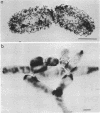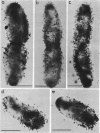Abstract
Induction of the synthesis of the receptor for phage lambda is obtained by adding maltose and adenosine 3'-5'-cyclic monophosphate to glucose grown cells of Escherichia coli. Bacteria induced for a short period of time were infected with a high multiplicity of phage lambda , and examined under the electron microscope. Only a fraction of the bacteria were seen to have adsorbed a large number of phage particles. The majority of such bacteria had a constriction indicating formation of a septum, and, in this case, the density of adsorbed particles was highest in the vicinity of the constriction. When found on bacteria showing no sign of septum formation, the adsorbed particles were asymmetrically distributed, one pole of the bacteria being more heavily covered with phage particles than the other. Such asymetrically covered bacteria are believed to have originated from cells which divided during the induction period. The results suggest that the receptor for phage lambda, a protein of the outer membrane, is integrated in the cell envelope during the last quarter of each generation and that the integration process is initiated in the vicinity of the forming septum.
Full text
PDF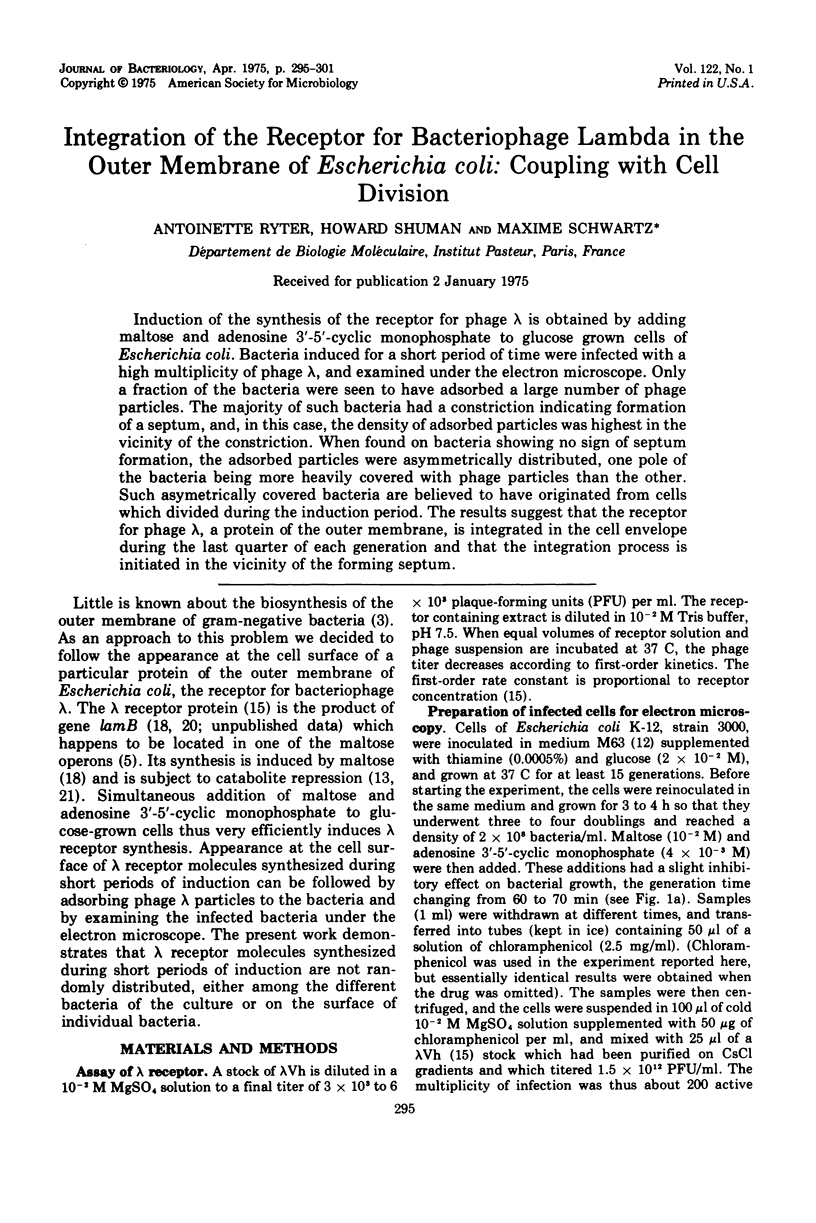
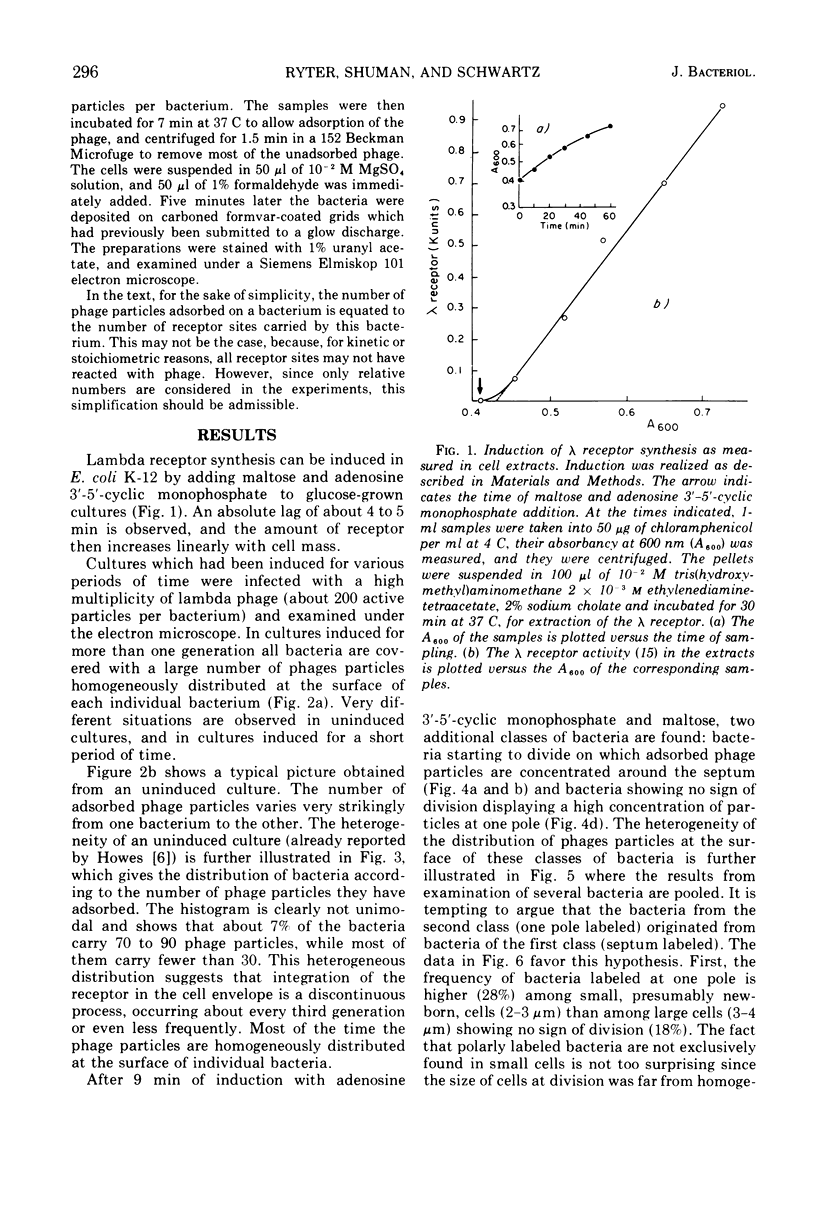
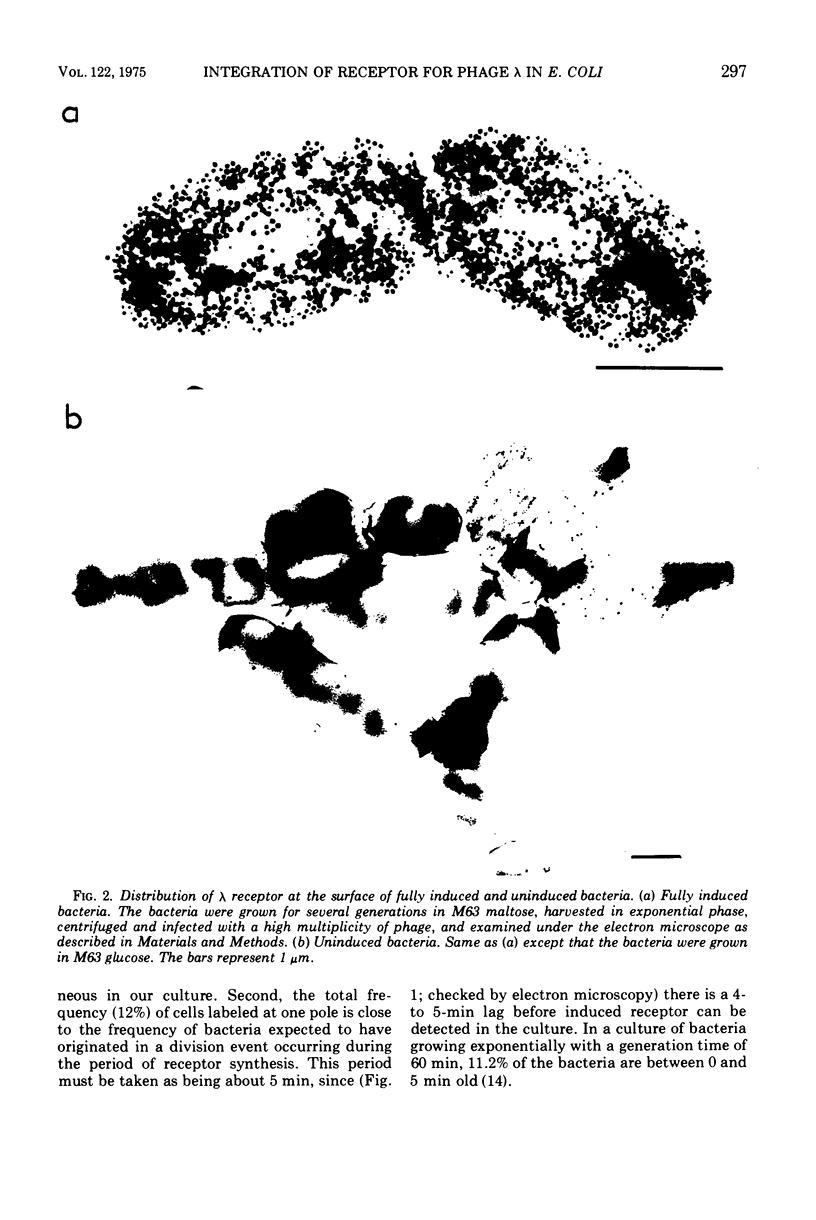
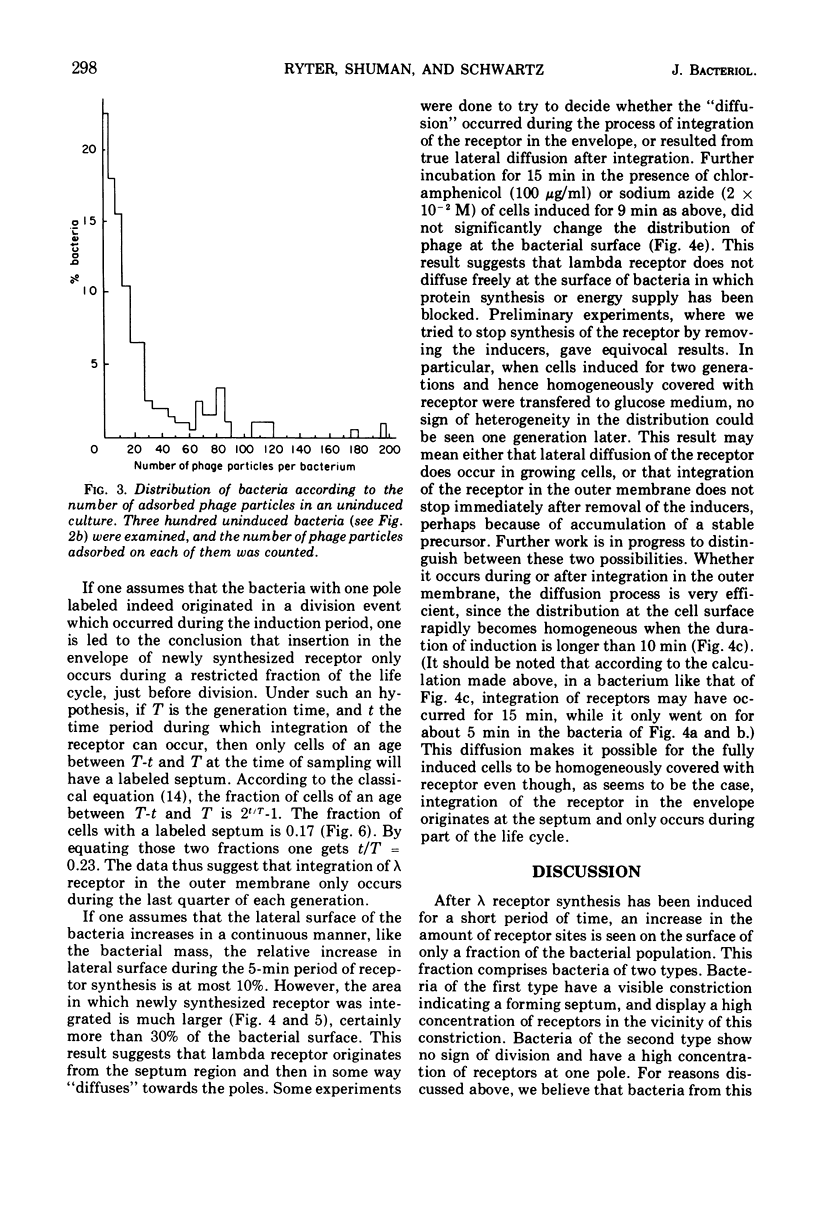
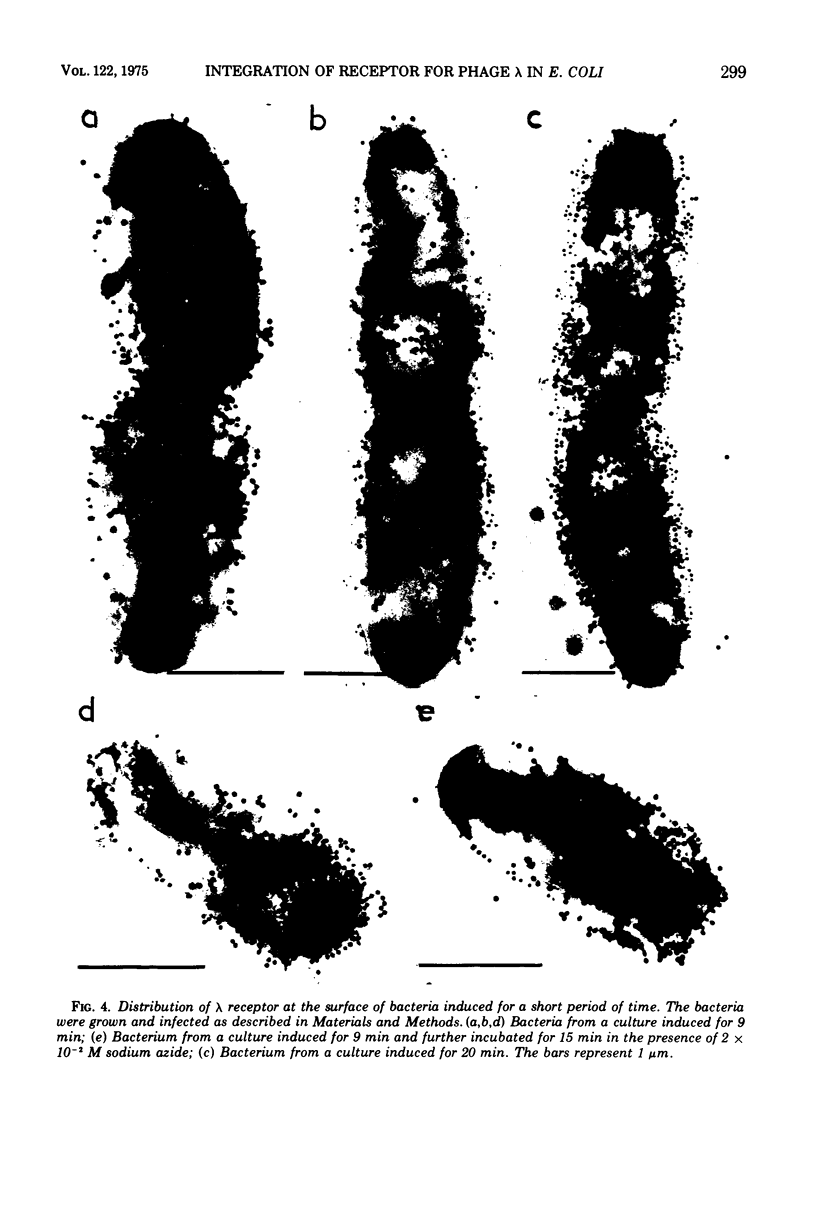
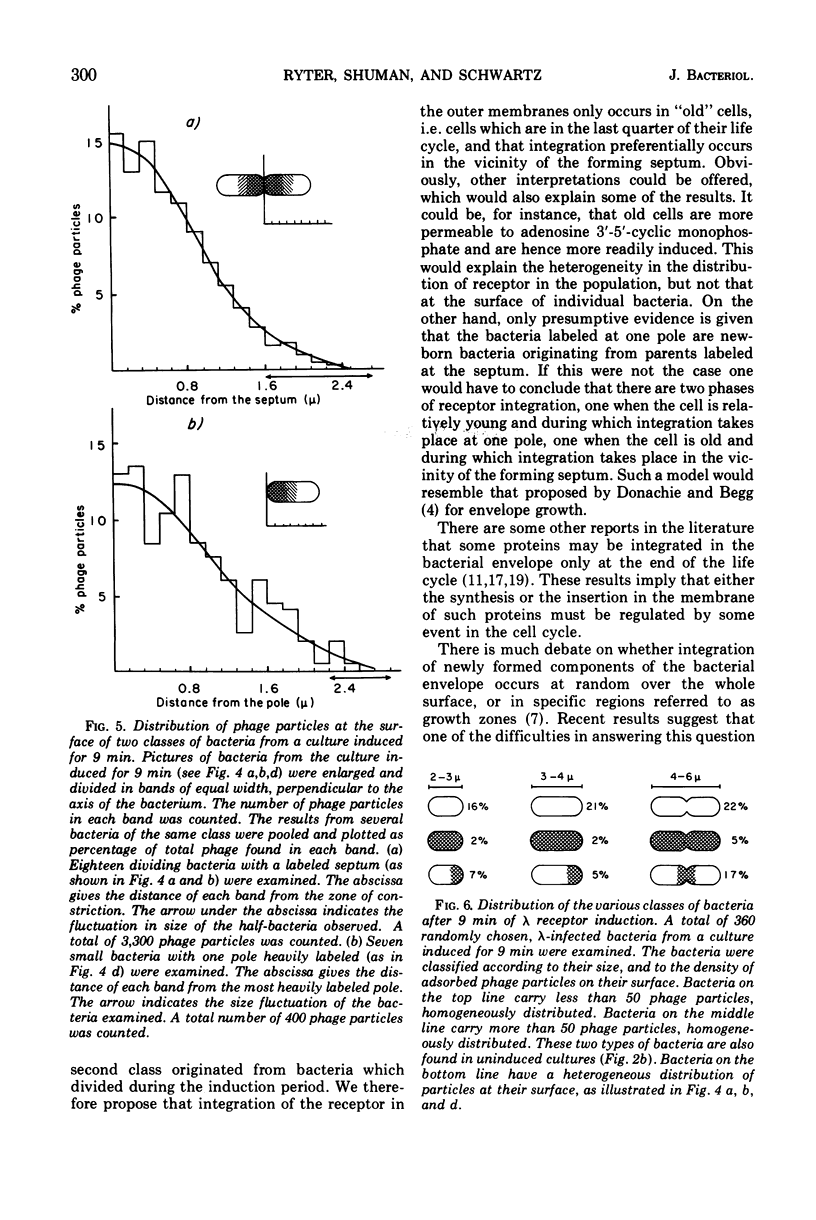
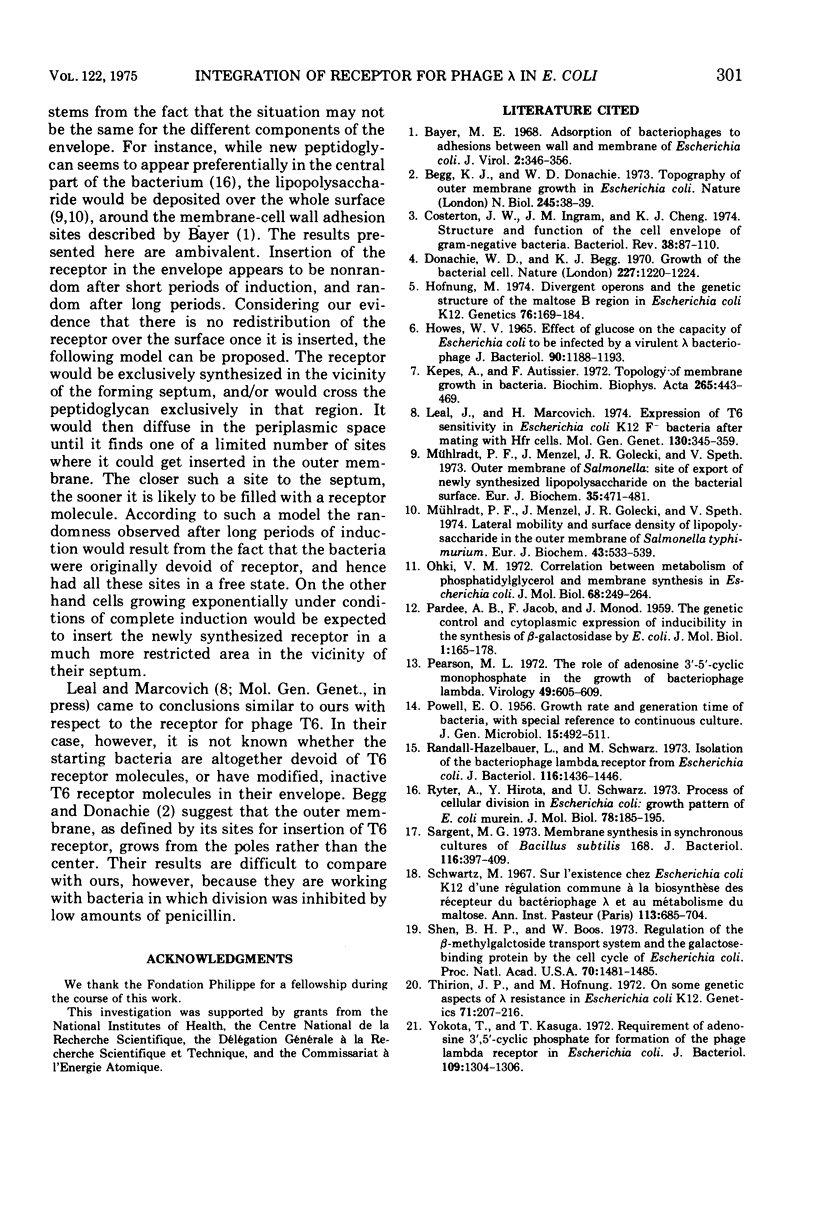
Images in this article
Selected References
These references are in PubMed. This may not be the complete list of references from this article.
- Bayer M. E. Adsorption of bacteriophages to adhesions between wall and membrane of Escherichia coli. J Virol. 1968 Apr;2(4):346–356. doi: 10.1128/jvi.2.4.346-356.1968. [DOI] [PMC free article] [PubMed] [Google Scholar]
- Begg K. J., Donachie W. D. Topography of outer membrane growth in E. coli. Nat New Biol. 1973 Sep 12;245(141):38–39. doi: 10.1038/newbio245038a0. [DOI] [PubMed] [Google Scholar]
- Costerton J. W., Ingram J. M., Cheng K. J. Structure and function of the cell envelope of gram-negative bacteria. Bacteriol Rev. 1974 Mar;38(1):87–110. doi: 10.1128/br.38.1.87-110.1974. [DOI] [PMC free article] [PubMed] [Google Scholar]
- Donachie W. D., Begg K. J. Growth of the bacterial cell. Nature. 1970 Sep 19;227(5264):1220–1224. doi: 10.1038/2271220a0. [DOI] [PubMed] [Google Scholar]
- Hofnung M. Divergent operons and the genetic structure of the maltose B region in Escherichia coli K12. Genetics. 1974 Feb;76(2):169–184. doi: 10.1093/genetics/76.2.169. [DOI] [PMC free article] [PubMed] [Google Scholar]
- Howes W. V. Effect of glucose on the capacity of Escherichia coli to be infected by a virulent lamba bacteriophage. J Bacteriol. 1965 Nov;90(5):1188–1193. doi: 10.1128/jb.90.5.1188-1193.1965. [DOI] [PMC free article] [PubMed] [Google Scholar]
- Leal J., Marcovich H. Expression of T6 sensitivity in Escherichia coli K12F minus bacteria after mating with HFR cells. Mol Gen Genet. 1974 Jun 27;130(4):345–359. doi: 10.1007/BF00333874. [DOI] [PubMed] [Google Scholar]
- Mühlradt P. F., Menzel J., Golecki J. R., Speth V. Lateral mobility and surface density of lipopolysaccharide in the outer membrane of Salmonella typhimurium. Eur J Biochem. 1974 Apr 16;43(3):533–539. doi: 10.1111/j.1432-1033.1974.tb03440.x. [DOI] [PubMed] [Google Scholar]
- Mühlradt P. F., Menzel J., Golecki J. R., Speth V. Outer membrane of salmonella. Sites of export of newly synthesised lipopolysaccharide on the bacterial surface. Eur J Biochem. 1973 Jun 15;35(3):471–481. doi: 10.1111/j.1432-1033.1973.tb02861.x. [DOI] [PubMed] [Google Scholar]
- Oki M. Correlation between metabolism of phosphatidylglycerol and membrane synthesis in Escherichia coli. J Mol Biol. 1972 Jul 21;68(2):249–264. doi: 10.1016/0022-2836(72)90212-4. [DOI] [PubMed] [Google Scholar]
- POWELL E. O. Growth rate and generation time of bacteria, with special reference to continuous culture. J Gen Microbiol. 1956 Dec;15(3):492–511. doi: 10.1099/00221287-15-3-492. [DOI] [PubMed] [Google Scholar]
- Pearson M. L. The role of adenosine 3',5'-cyclic monophosphate in the growth of bacteriophage lambda. Virology. 1972 Aug;49(2):605–609. doi: 10.1016/0042-6822(72)90513-2. [DOI] [PubMed] [Google Scholar]
- Randall-Hazelbauer L., Schwartz M. Isolation of the bacteriophage lambda receptor from Escherichia coli. J Bacteriol. 1973 Dec;116(3):1436–1446. doi: 10.1128/jb.116.3.1436-1446.1973. [DOI] [PMC free article] [PubMed] [Google Scholar]
- Ryter A., Hirota Y., Schwarz U. Process of cellular division in Escherichia coli growth pattern of E. coli murein. J Mol Biol. 1973 Jun 25;78(1):185–195. doi: 10.1016/0022-2836(73)90437-3. [DOI] [PubMed] [Google Scholar]
- Sargent M. G. Membrane synthesis in synchronous cultures of Bacillus subtilis 168. J Bacteriol. 1973 Oct;116(1):397–409. doi: 10.1128/jb.116.1.397-409.1973. [DOI] [PMC free article] [PubMed] [Google Scholar]
- Schwartz M. Sur l'existence chez Escherichia coli K 12 d'une régulation commune à la biosynthèse des récepteurs du bactériophage et au métabolisme du maltose. Ann Inst Pasteur (Paris) 1967 Nov;113(5):685–704. [PubMed] [Google Scholar]
- Shen B. H., Boos W. Regulation of the -methylgalactoside transport system and the galatose-binding protein by the cell cycle of Escherichia coli. Proc Natl Acad Sci U S A. 1973 May;70(5):1481–1485. doi: 10.1073/pnas.70.5.1481. [DOI] [PMC free article] [PubMed] [Google Scholar]
- Thirion J. P., Hofnung M. On some genetic aspects of phage lambda resistance in E. coli K12. Genetics. 1972 Jun;71(2):207–216. doi: 10.1093/genetics/71.2.207. [DOI] [PMC free article] [PubMed] [Google Scholar]
- Yokota T., Kasuga T. Requirement of adenosine 3',5'-cyclic phosphate for formation of the phage lambda receptor in Escherichia coli. J Bacteriol. 1972 Mar;109(3):1304–1306. doi: 10.1128/jb.109.3.1304-1306.1972. [DOI] [PMC free article] [PubMed] [Google Scholar]



